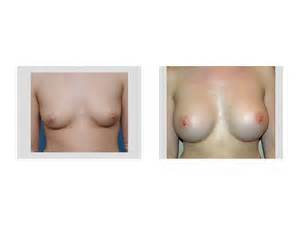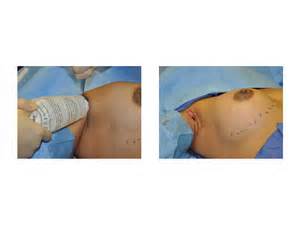
The three most commonly used incisions for placement of breast implants are the peri-areolar (incision placed where the darker areolar skin and lighter breast skin meet), inframammary (incision placed in the fold of skin just below breast) and transaxillary (incision placed in the skin of the underarm area). While there are advantages and disadvantages to each of these incisional approaches, only the transaxillary incision allows placement of the breast implant without creating a scar on the breast itself.

Advances in technology and the development of minimally-invasive surgical techniques have given rise to the endoscopic transaxillary approach. The use of fiberoptic light sources, cameras and television monitors now allows plastic surgeons to see the space the implant will sit in as it is being created. Its one distinct advantage over a blind transaxillary approach is that the inferior end of the pectoralis muscle can be released and cauterized by direct vision.
The endoscopic transaxillary technique is similar to the more traditional, non-visualized way in that it has low rates of complications such as bleeding, infection, scarring around the implant and problems with healing of the incision. It does, however, differ in 3 distinct ways. First, it requires the use of specialized equipment that not every facility may have. Also, operation times are increased using this method, although this decreases the more times the surgeon has performed the operation. Finally, the rates of poor positioning seen with the more traditional, non-visualized method were reduced with using the endoscopic equipment, but not eliminated.

For the patient looking for augmentation while avoiding scars on the breasts, transaxillary breast augmentation is a safe and well-established approach. Both saline and certain sized silicone implants (500cc or under) may be used via this approach as well. Patient satisfaction is high when this approach is used and complication rates are comparable to both inframammary and peri-areolar incisions.
Dr. Riesa Monet Burnett
Dr. Barry Eppley
Indianapolis, Indiana


